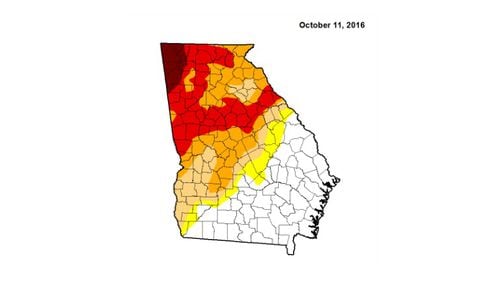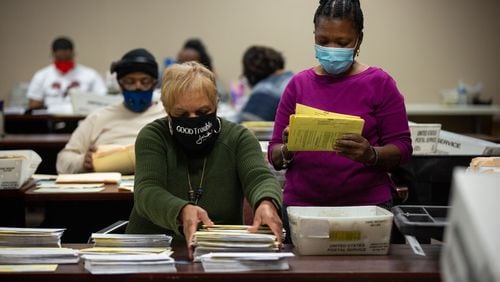North Georgia’s searing drought has forced Haralson County, 35 miles west of downtown Atlanta, to impose the state’s harshest watering restrictions.
No outdoor watering (except for irrigation of family food plots). No car washes. Football fields must remain dry. And, please, don’t run the water while brushing your teeth.
The Tallapoosa River is so low that the county water authority dismantled beaver dams Sunday. Preachers used the pulpit to spread the water-conservation word. And nearby Anniston, Ala. is sending water Haralson’s way.
“Longtimers say they’ve never seen it this bad since 1925,” said Charlie Walker, executive director of the county’s water authority. “The picture from our dam looking upstream is just unbelievable. Within a two-day period, it dropped three feet. It looks like somebody pulled a cork out of the bottom of a tub.”
Haralson is the first Georgia county to trigger a Level III — the most severe — drought. Yet 50 counties across North Georgia are experiencing, at least, an “extreme” drought, according to the U.S. Drought Monitor. A handful of counties in far Northwest Georgia are experiencing an “exceptional” — the worst — drought.
Atlanta’s rainfall deficit, since March 1, is almost 11 inches. Rome, north of Haralson County, is a foot below average rainfall. Lake Lanier, the region’s main water source, is seven feet below full pool.
Although Haralson remains in an “extreme” drought, its streams are drying up. Walker said the county is buying water from Anniston and will do likewise with Carroll County. But that won’t be enough.
“It’s up to everybody to do their part,” Walker said. “If you don’t need to use water, don’t use it. We’re asking everybody to conserve.”
He’s also aiming for those pesky, river-clogging beavers. About 30 volunteers targeted four beaver dams along the Tallapoosa River Sunday morning. They’ll try to tear down the dams by hand or, possibly, with back hoes. Wood and other debris dislodged from a dam the other night filled three dump trucks.
“After we knocked it out, our (reservoir) went up four inches,” Walker said.
The water authority wants to reduce daily water consumption by one-third to 1.8 million gallons.






